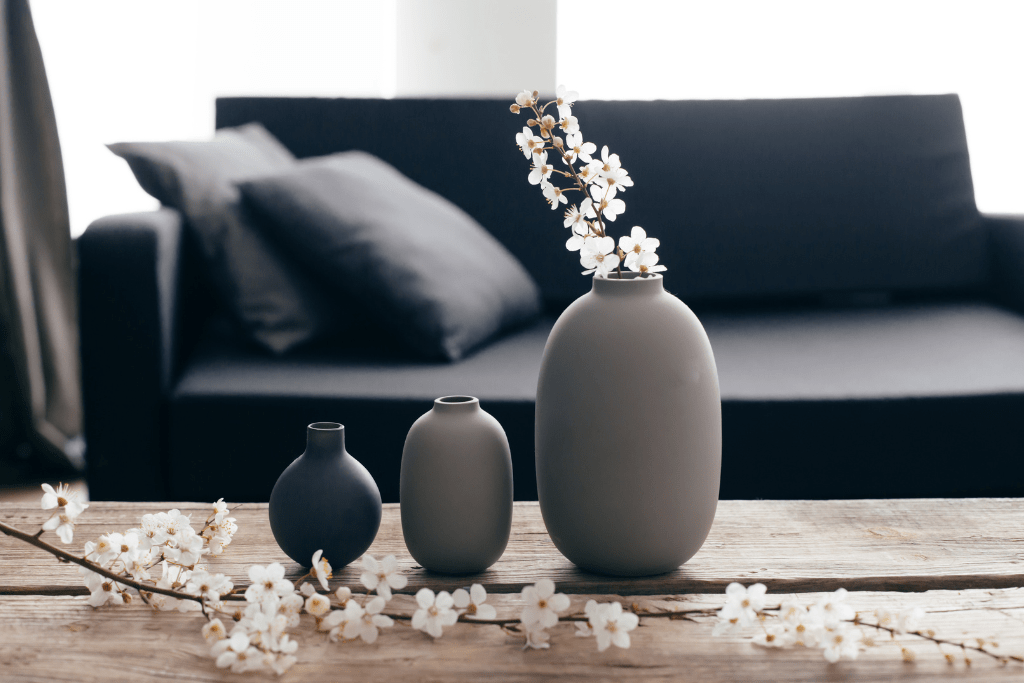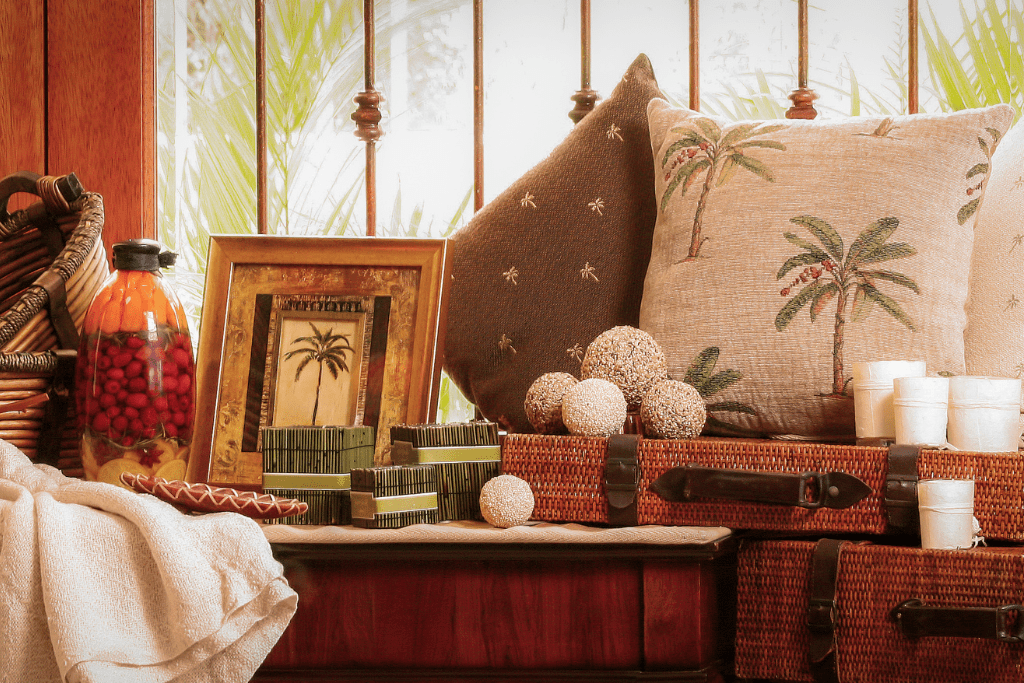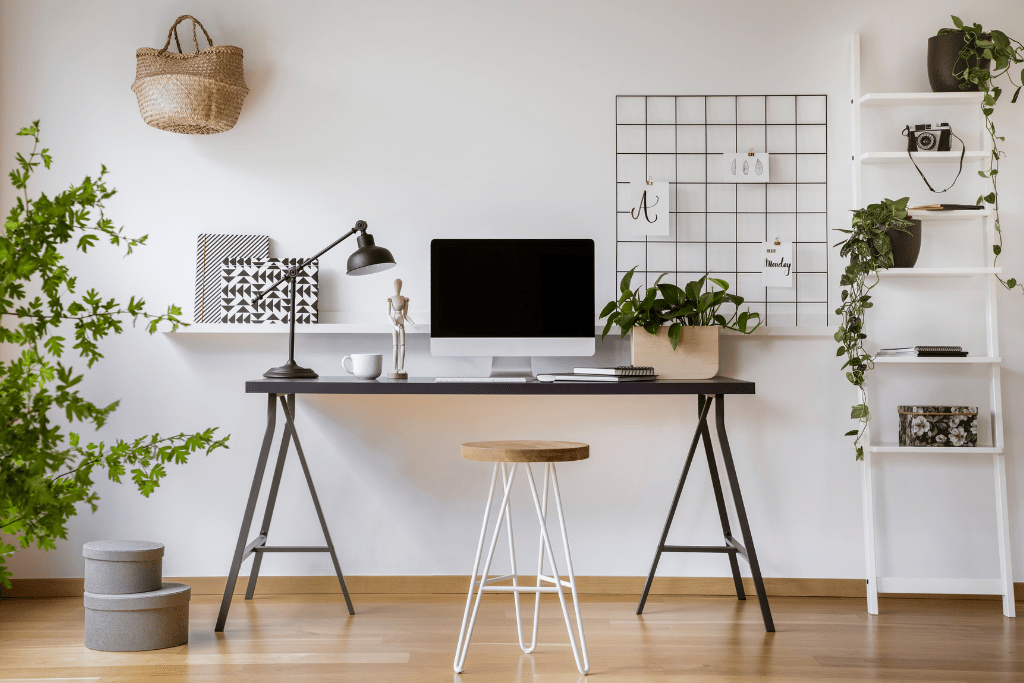Learn how to start a home decor business with our comprehensive guide. We cover everything on how to turn your passion into profit, from niche selection and business plans to common pitfalls to avoid.
Home decor—where creativity meets functionality. Your love for decorative vases and rustic farmhouse tables has led you here, and you’re toying with the idea of turning that passion into a thriving business.
If you’re interested in turning your eye for beautiful and functional living spaces into a profitable venture, you’re in the right place. This comprehensive guide takes you through the essentials of starting and running a successful home decor enterprise. Along the way, we’ll also address common issues that often derail startups, so you’ll know exactly what to avoid.
Why this guide? Because your design skills shouldn’t just be a hobby. They have real business potential. But keep in mind that the information in this guide is intended for general informational purposes only and should not be taken as professional or legal advice. Consult with qualified professionals for advice tailored to your specific circumstances.
So grab your favorite throw pillow, nestle into that perfectly distressed leather armchair, and let’s get started on your journey to home decor business ownership.

Identifying Your Niche
Before diving into the logistics and legalities of starting a home decor business, you’ll want to spend quality time identifying your niche. This is more than just a preliminary step; it’s the bedrock upon which your business will be built. By pinpointing your specific area of focus within the broad spectrum of home decor, you’ll guide every future decision, from inventory selection to marketing strategy. Let’s dig into the nitty-gritty.
Conducting research into customer buying behaviors and current trends in the industry and gaining insights into customers’ interior design preferences can help you identify gaps in the market where your home decor business can address target audience needs.
You can choose to focus on selling affordable home decor items for budget-conscious customers or target luxury home decor enthusiasts with high-end interior furnishings and increase your chances of success with tailored marketing strategies.
Diversifying your niche of interior design products to encompass different styles, themes, and price ranges can help expand your market reach by making you adaptable to different clients’ styles.
You can also consider including additional services that complement the primary services you provide to build a greater client base. For example, if you offer home furnishing services like home staging, you can opt to also offer consultation services for sourcing furniture and how to arrange them in your home.
When starting an interior design business, it’s usually best to focus on a specific niche. As your business expands, you can introduce additional services such as color consulting, virtual design, and artistic decoration, which are highly sought after by interior design enthusiasts.

Establishing Your Brand
Your brand is the face of your business; it’s what customers will identify with and what sets you apart from the competition. Think of your brand as a person—what personality traits would it have? Is it luxurious and sophisticated, or perhaps cozy and welcoming? Decide on the emotions you want your brand to evoke and then build your business aesthetic around it. From your logo to your storefront, whether physical or digital, consistency is key. A well-defined brand helps in attracting the right audience and in creating a loyal customer base.
You can achieve a profitable interior design business through maintaining consistency across your brand’s touchpoints, like your business’s social media and website, to build loyalty from your customers and grow your brand recognition.
As you design your brand’s personality, it’s important that you pick a compelling logo, choose a color palette and design that resonates with your target audience, and advertise your products and services effectively.
Importance of Finding a Unique Selling Proposition
While passion for home decor is crucial, it won’t be enough to carry the business. You’ll be up against numerous competitors, and you need a unique selling proposition (USP) that distinguishes you from the rest. A USP is not a tagline but a unique benefit that makes your business the better choice. Maybe you offer sustainably sourced products, or perhaps you specialize in a particular style of furniture that’s hard to find. Whatever it is, your USP needs to be compelling, specific, and easily communicated to your potential customers.
Types of Home Decor Styles and Target Demographics
The home decor industry caters to a plethora of styles, from mid-century modern to boho-chic and everything in between. It’s crucial to understand not just what style or styles you want to offer but also who your target customers are. Young urban professionals may have different tastes and budgets compared to empty-nesters looking to revamp their homes. Tailoring your inventory to your target demographic will make your marketing more effective and inventory management more straightforward.
Market Research Strategies
Once you’ve outlined your brand, USP, and target demographic, it’s time to validate those decisions through market research. Utilize online surveys, conduct focus groups, or even examine your competitors to gauge the market demand.
- Online Surveys: Use platforms like Google Forms or SurveyMonkey to create questionnaires that can help you understand customer needs and preferences.
- Focus Groups: A small, diverse group of people discussing your product or style can provide qualitative data that surveys may not capture.
- Competitor Analysis: Look at successful businesses that are similar to your niche but don’t directly compete with you. What are they doing right? More importantly, what are they doing wrong, and how can you do it better?
By investing time in identifying your niche, you’re not just making an educated guess; you’re laying a strong foundation for a successful business. This is not a “set and forget” type of task; it’s a continuous process that will evolve as your business grows and as market trends shift.

Selecting the Location of Your Business
Choosing the right location for your home decor business is like picking the perfect centerpiece for your dining room table. It sets the tone and has a significant impact on how well everything else falls into place. The choices range from home-based and online to retail storefronts and traditional offices. Each has its perks and pitfalls. So let’s break down what you need to consider for each to make an informed decision.
Home-Based Business
Running a home-based business is the cozy sweatpants of business locations—comfortable and low-maintenance. It’s a stellar option for those starting out or wanting to keep overhead low. The cost savings on rent, utilities, and commute can be channeled into product development or marketing. However, working where you live may blur the lines between professional and personal life. You’ll also need to check zoning laws to ensure your business type is allowed in a residential area.
Online Business
An online location puts you in the virtual realm where foot traffic is replaced by clicks and scrolls. The overhead is even lower than a home-based business, and you have a potentially global customer base. Yet, fierce competition and the absence of in-person interaction can be challenging. Security of both data and transactions is also a critical consideration.
Retail Storefront
A brick-and-mortar store offers the allure of physical presence—window displays, in-person customer service, and immediate product availability. It’s the red-carpet event of business locations, flashy and glamorous. However, the costs of rent, utilities, and additional staff are significantly higher. Location is everything; a bad one can break your business faster than a trending negative Yelp review.
Office Location
Opting for an office is often a middle ground between home-based and retail. Offices offer a distinct professional space without the demands of a storefront. They’re excellent for businesses that may require a showroom or a space for client consultations rather than a full-blown retail setting. Costs are lower than retail but higher than home-based or online, so factor this into your budgeting.
Choosing the right location involves weighing costs, market reach, work-life balance, and the type of customer interaction you desire. Pick wisely, and you’ll set a strong foundation for your home decor business, one where every element harmonizes like a well-decorated room.

Secure Legal Assistance to Avoid Tax Problems
The law requires you to obtain the necessary permits and licenses to operate as well as acquire a tax identification number to file taxes for your business entity. Registering your home decor business as a limited liability company can help you protect your personal assets in the event your business incurs legal issues or debts.
Enlisting the services of legal professionals can streamline your tax compliance responsibilities and ensure your business complies with all necessary requirements.
Based on your location and situation, you may be required the following permits and legal documents for your interior design business:
- An operating license to allow you to work in an unsupervised commercial space
- A business insurance to cover yourself from the potential losses or risks of your operations
- Employment contracts to specify the work agreement between you and your employees and how you’ll pay them
- A business license from your state
Complying with all legal requirements for a home decor business legitimizes your operations and affords various benefits for your business to thrive.

Create a Business Plan To Map Out Your Goals and Strategies
Launching a successful home decor business involves more than just a passion for design. Behind the aesthetic appeal of your merchandise lies the backbone of your venture—a robust business plan and solid financial foundation. This section delves into the integral parts of business planning and how to secure the necessary funds for a smooth start and long-term success.
Your business plan provides direction that helps you stay focused and organized as you navigate starting and growing your home decor business. It helps you highlight the different things you’ll do for your design firm’s success and should include major sections like:
- An accurate and clear financial plan with your sales and profit projections
- Your business description declaring your services, goals, and vision
- Your marketing plan that includes your unique selling points
- The style and structure of your business
- A competitive analysis section with a detailed analysis of your business rivals
Most investors will demand to see your business plan before funding and an outstanding business plan can open doors to more funding from banks and financial institutions.
Components of a Well-Crafted Business Plan
A business plan serves as the roadmap for your enterprise, providing direction and helping you prepare for obstacles. It’s not just a document you create once; it’s a living tool that should be revisited and revised as your business evolves. Key components include:
- Executive Summary: A snapshot of your business, summarizing the who, what, where, when, and why.
- Market Analysis: Data and insights about your target market, competition, and business environment.
- Organization and Management: Describes your business structure and the team that will help you achieve your goals.
- Service or Product Line: Detailed information about the products or services you offer, including the problem they solve or need they address.
- Sales and Marketing: How you intend to attract and retain customers.
- Financial Projections: A forecast of your financial future, including balance sheets, profit and loss statements, and cash flow projections.
Financial Planning: Budget, Cash Flow, and Projections
Cash is king, especially in business. Having a thorough understanding of your financial picture is not just recommended, it’s essential. Let’s go through the essentials:
- Budget: List all your anticipated business costs, from initial setup to operating expenses. Know what you’ll need to keep your business running for at least 6 to 12 months.
- Cash Flow: This is a real-time snapshot of money coming in and going out. You need to know that you can cover all your costs, from supplier invoices to employee wages.
- Projections: Based on your budget and cash flow, make educated guesses about where your business will be financially in the coming months and years. This will be vital not just for internal planning but also for securing loans or investments.
Smart financial planning sets the stage for a business that’s not just creative and captivating but also sustainable and profitable.
Financing Options: Loans, Venture Capital, Bootstrapping
Money may not buy happiness, but it certainly buys inventory, pays employees, and keeps the lights on. Here are common ways to finance your dream:
- Loans: Traditional bank loans offer a large sum upfront, typically with lower interest rates, but require good credit and often, collateral.
- Venture Capital: If you’re willing to part with equity in your business, venture capital can provide a significant cash infusion and mentorship but involves giving up a share of ownership.
- Bootstrapping: Self-funding is an option if you have savings set aside. The benefit is you retain full control, but the risk is entirely on you.

Sourcing Products and Inventory Management
Sourcing the perfect products and managing your inventory efficiently are crucial to your home decor business’s success. It’s like planning a dinner party; you need the right ingredients in the right amounts. Except this party never ends, and the guests are your customers. So let’s tackle how to keep your store well-stocked without breaking the bank or compromising quality.
Domestic vs. International Sourcing
Your first big decision is whether to source your products domestically or from international suppliers.
- Domestic Sourcing: Generally, faster shipping and lower shipping costs. You’re also less likely to face import taxes or customs issues. However, the products themselves can be more expensive.
- International Sourcing: Often cheaper and can provide a greater variety of products. But you’ll need to consider shipping times, import taxes, and the complexities of international business relationships.
Quality Assurance Measures
You don’t want to be the store selling subpar cushions or easily breakable vases. That’s a quick ticket to a tarnished reputation.
- Samples: Always start with samples before placing large orders.
- Inspections: Whether you go in person, hire a third party, or ask for detailed photos, inspect products before they’re shipped to you.
- Reviews and Ratings: Use industry websites and forums to check out suppliers and their reputation.
Building Relationships with Suppliers
A reliable supplier is as crucial to your business as a reliable friend is to a good night out. Here’s how to foster that relationship:
- Clear Communication: From the get-go, be clear about your expectations regarding quality, timing, and pricing.
- Negotiate Terms: Don’t just accept the first price you’re given. It’s all up for discussion.
- Maintain Contact: Regular check-ins are key. This is a relationship, after all, and it needs nurturing.
Selecting an Inventory System
Just as you wouldn’t use a sundial to tell time in this day and age, you need a modern inventory system to track your stock.
- Manual Systems: Think spreadsheets and ledgers. Simple but time-consuming.
- Automated Systems: Software that tracks sales and adjusts inventory levels automatically. More upfront cost, but saves time and reduces errors in the long run.
Stocking Strategies: Just-in-Time vs. Bulk Buying
How much stock should you keep on hand?
- Just-in-Time: You only order products as they’re needed. This minimizes storage costs but risks running out of stock.
- Bulk Buying: You buy a lot at once to save money on each unit, but then you have to store it all.
Seasonal Inventory Planning
Home decor is highly seasonal. Winter calls for cozy throws and candles, while summer demands vibrant patio decor.
- Forecasting: Use last year’s sales data, if available, and current market trends to anticipate seasonal demands.
- Timelines: Know the lead times for your seasonal products to ensure they arrive when you need them.
Choosing your suppliers wisely, ensuring product quality, and managing your inventory efficiently are non-negotiables in the home decor business. So, make sure your products are both beautiful and readily available to your customers when they want them.

Common Problems To Avoid When Starting Your Home Decor Business
Starting a home decor business can be exhilarating. It’s like hosting a grand event; the lights are on, the decor is perfect, and the guests—your customers—are excited. But just like any event, things can go sideways if you’re not prepared. Let’s go over some common pitfalls you absolutely want to sidestep on your journey to business success
Common problems that new home design business owners experience that you should avoid include:
Failing To Develop a Solid Marketing Strategy
Your home decor business may struggle to gain traction in the interior design marketplace without effective marketing strategies to reach your target audience. You can publish blogs on your website with information on interior design topics like decorating a luxury home on a budget to increase your site’s click-through rate and drive sales.
Regularly analyzing and adjusting your marketing strategies based on market trends and your customers’ feedback can help you optimize your marketing efforts to get the most out of it. You should research the market demand, and consumer preferences and identify potential gaps in the market to help you structure an effective marketing strategy.
Cash Flow Mismanagement
Money is like the oxygen of your business; run out of it, and everything comes to a grinding halt. Managing your cash flow is a balancing act.
- Overspending: Whether it’s excessive initial inventory or high-end office space, spending too much upfront can choke your business before it starts.
- Delayed Receivables: If you’re getting paid too late but need to pay your suppliers pronto, you’re in trouble.
- Lack of Emergency Funds: Always have a cash reserve. This isn’t just good life advice; it’s good business advice.
Having Poor Customer Service
Prioritizing customer satisfaction with quick responses to their inquiries and going the extra mile to exceed their expectations can help you build a loyal customer base that leaves positive reviews for your business.
You need to ensure that your home decor business offers hassle-free returns to customers and offers personalized attention to each customer’s needs. Your interior design firm can benefit from having prompt and effective communication channels online as well as offline and customer service professionals to manage your business’s customer support needs.
Supply Chain Disruptions
Imagine planning the party of the year and your DJ, food, and party favors don’t show up. That’s what supply chain disruptions feel like.
- Single Supplier Risks: If you rely on a single supplier, what happens if they can’t deliver? Diversify your sources to protect yourself.
- Logistical Hiccups: Strikes, natural disasters, and even traffic jams can delay your shipments. Have backup plans and be ready to communicate with customers.
Overestimating Market Demand
Believing that your products will fly off the shelves like hotcakes can be an ego trap. Without comprehensive market research, you’re essentially driving without a roadmap. Overestimating demand can also result in excessive inventory that becomes a financial burden. The trick is to pay close attention to customer feedback; use reviews and surveys to continually refine your product offerings.
Underestimating the Level of Effort Required
If business is a race, it’s less of a 100-meter dash and more of a relentless relay filled with hurdles. You’ll need to manage your time immaculately as you’ll wear many hats, from CEO and marketer to perhaps even janitor. The emotional toll of running a business is often overlooked, so make sure you have a sturdy support system. And then there are the skill gaps; you may be a whiz at decor, but accounting or marketing might not be your forte. Recognize these gaps early on and consider bringing in experts or consultants to fill them.
Understanding and navigating these common problems will put you on a firmer path to long-term success. After all, no one wants to trip over their own feet when they could be dancing.

Summary and Key Takeaways
Starting your own home decor business is an exciting yet challenging venture. From managing cash flow and avoiding supply chain hiccups to gauging market demand accurately and recognizing the true effort required, the road to success is filled with potholes you’ll want to avoid. But don’t worry, with proper planning and a keen eye for details, you’re more than capable of steering clear of these common pitfalls.
Here are your key takeaways:
Cash Flow: Balance your spending wisely, get paid on time, and always have a reserve fund. Money issues can stifle your business faster than you can say “bankruptcy.”
Supply Chain: Diversify your suppliers and have backup plans to counter any logistical disruptions. Your supply chain is your lifeline; treat it as such.
Market Demand: Comprehensive research and continual customer feedback are essential. Assumptions about demand can lead to financial burdens, so keep your finger on the pulse of your market.
Legal Considerations: Get your business structure, permits, and contracts in order. It may sound tedious, but not doing so is like trying to wallpaper over a crumbling wall.
Effort Required: Prepare for a long-haul commitment involving multiple roles and emotional ups and downs. Seek help for skills you lack and manage your time and emotional resources wisely.
Knowledge is your most powerful tool. Being aware of these pitfalls arms you with the insight needed to avoid them, setting you on the path to long-term success in your home decor business. Now, who’s ready to get this party started?


Fantastic guide for aspiring entrepreneurs looking to venture into the home decor business! The six steps provide a solid foundation, while the insights on common problems to avoid are invaluable. We appreciate the importance of a well-curated home environment, and your tips align perfectly with our commitment to quality and innovation. For those considering the home decor industry, this article is a must-read.
Invaluable advice for aspiring entrepreneurs! This blog not only outlines the essential steps to kickstart a home decor business but also provides insights on steering clear of common pitfalls. A great resource for those entering the market.
Amazing article